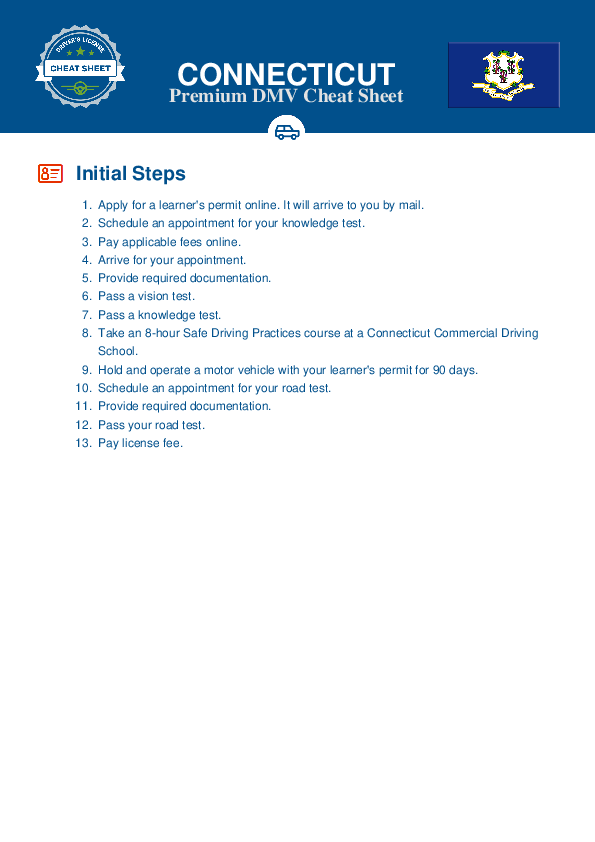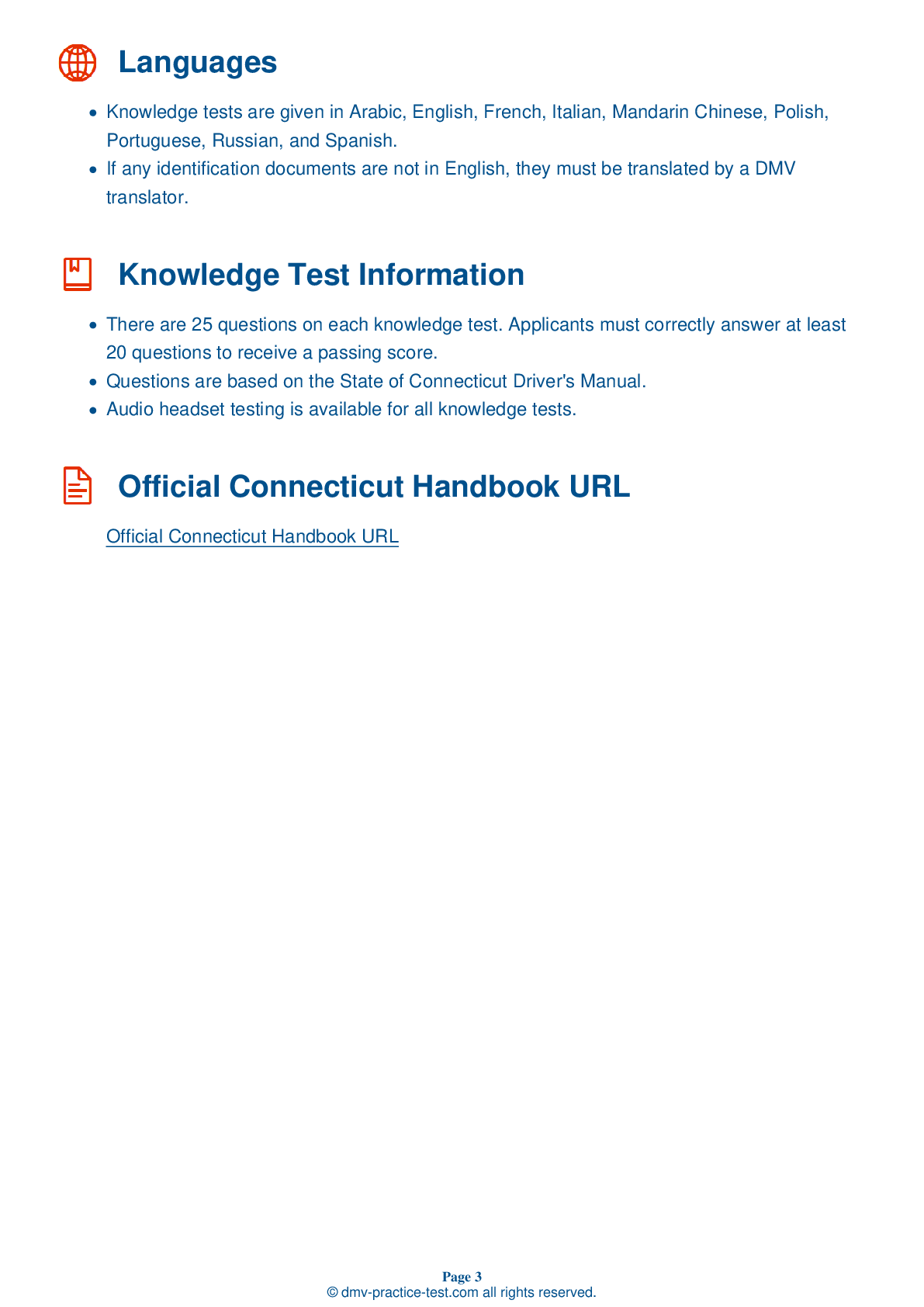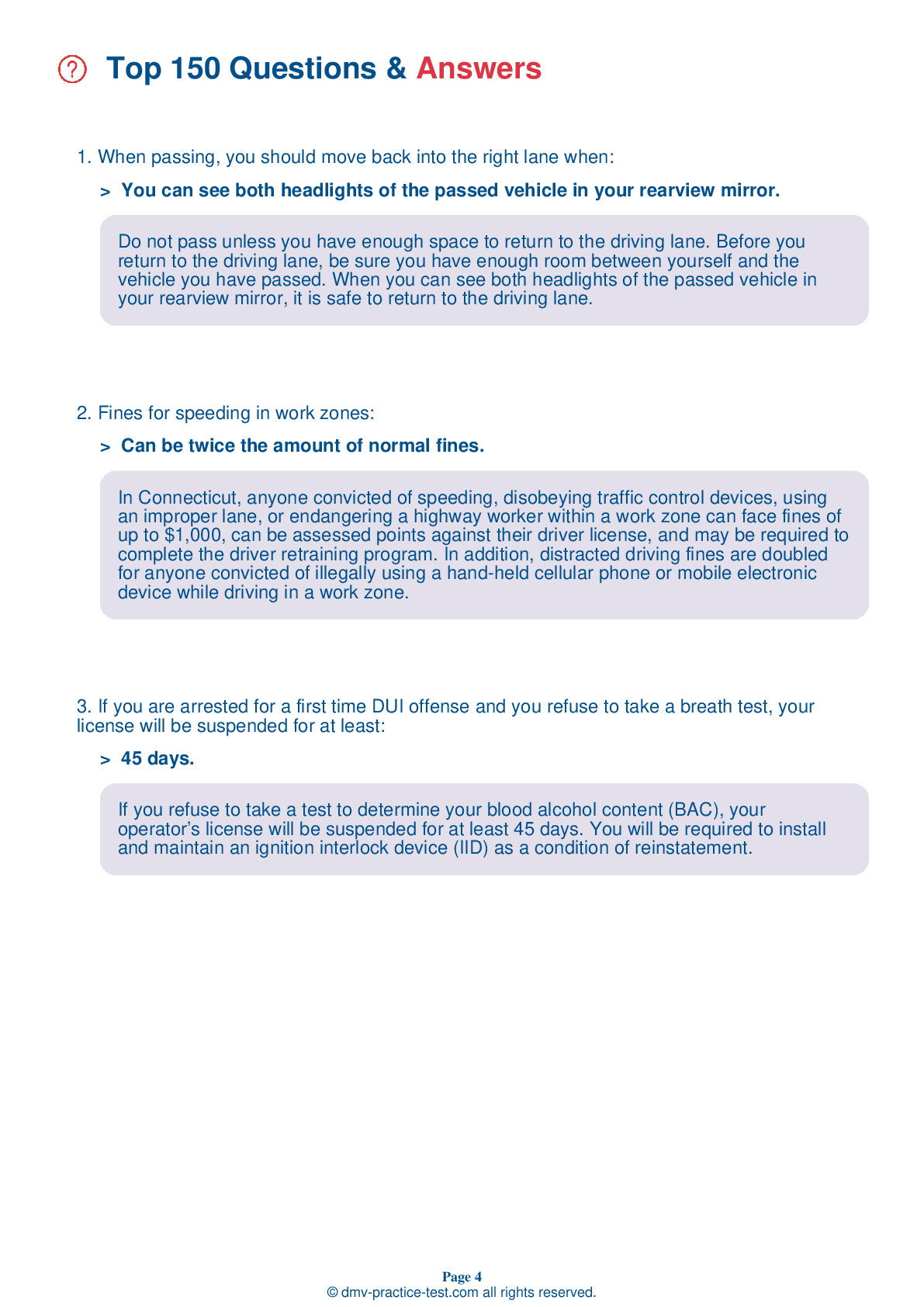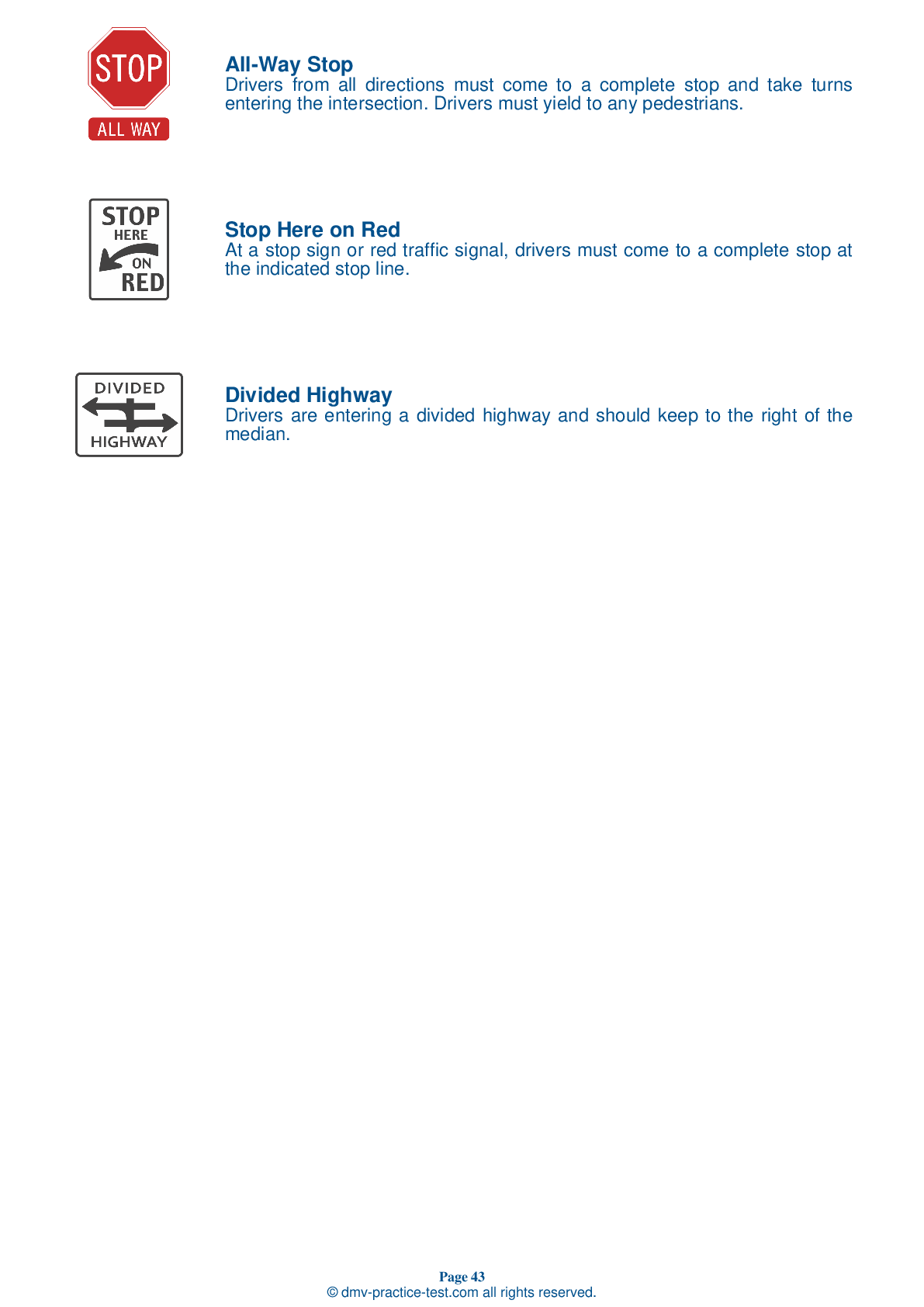FREE Connecticut DMV Practice Test #3 Page 3 of 3
This set of Connecticut DMV practise tests was just updated for January 2025. It includes questions based on the Connecticut Driver Handbook's most essential traffic signs and regulations for 2025. Use actual questions that are very similar (often identical!) to the DMV driving permit test and driver's licence exam to study for the DMV driving permit test and driver's licence exam.
Each practise test question has a hint and explanation to assist you in remembering the concepts. The written component of the official DMV test will include questions about road rules, traffic signs, and driving statutes, as well as information from the Driver Handbook.
To achieve the required passing grade, you must correctly answer 20 of the 25 questions. Take our DMV practise exam to help you prepare for your Connecticut instruction permit or driver's licence.
The DMV exam is available in several languages.
Using any form of testing help will result in an automatic fail, and the DMV may take further action against your driver's licence, so avoid it.
17 . A solid yellow line next to a broken yellow line means that vehicles:
Yellow lines separate lanes of traffic moving in opposite directions. A broken yellow line next to your driving lane means that you may pass.
18 . If you see a pedestrian using a guide dog or carrying a white cane:
Blind or partially blind pedestrians may carry a white cane or use the assistance of a guide dog. You must yield the right-of-way to a pedestrian with a guide dog or a white cane.
19 . As the percentage of alcohol (BAC) in your blood increases, you become:
Blood alcohol concentration (BAC) is a measure of the percentage of alcohol in a person's blood. The higher the BAC, the more impaired a person is.
20 . You are driving on a one-way street. You may only turn left onto another one-way street if:
You may turn left onto a one-way street that moves to the left if there is no sign prohibiting the turn. You may not turn left onto a one-way street where traffic moves to the right.
21 . This sign tells a driver that:
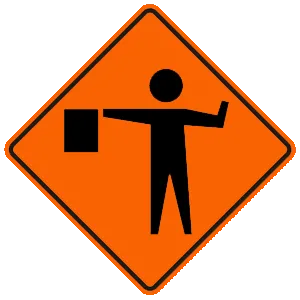
This sign warns that there is a flag person ahead. Always follow directions given by a flagger. Flaggers normally wear orange or yellow vests, yellow-green shirts, or bright jackets. They use paddles and red flags to direct traffic through the work zone and to let workers or construction vehicles cross the road.
22 . If the driver of an oncoming vehicle fails to dim their headlights:
If an oncoming driver fails to dim their headlights, look toward the right side of the road. This will keep you from being blinded by the other vehicle’s headlights and allow you to see enough of the road to stay on course. Do not try to retaliate by keeping your bright lights on.
23 . At a school crossing sign, you should:
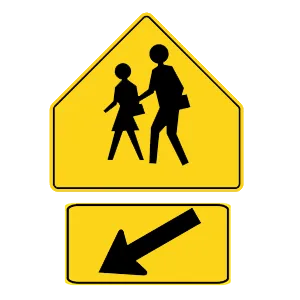
Pentagonal signs mean you are approaching a school zone and/or school crossing. When you see these signs, be alert and prepare to stop.
24 . Prior to entering a curve:
You may drive more slowly than the posted speed limit, based on road conditions, but it is illegal to drive any faster than the posted speed limit. Some conditions which require reduced speed for safety include approaching curves or hills where visibility is limited, driving on slippery roads, and driving on roads where animals and pedestrians are present.
25 . If you park facing uphill on a street with a curb, set the parking brake and:
When parking uphill on a road that has a curb, your wheels should be turned away from the curb. When parking uphill on a street without a curb or when parking downhill, your wheels should be turned toward the curb or edge of the road.
See the exact questions that will be on the 2025 Connecticut DMV exam.
99.2% of people who use the cheat sheet pass the FIRST TIME
LT gives us an insight on how the cheat sheet provided her with all the study questions she needed before taking her test.
Joe initially studied with the handbook and failed his test, he eventually found us online, studied and pass his test the first time around.
